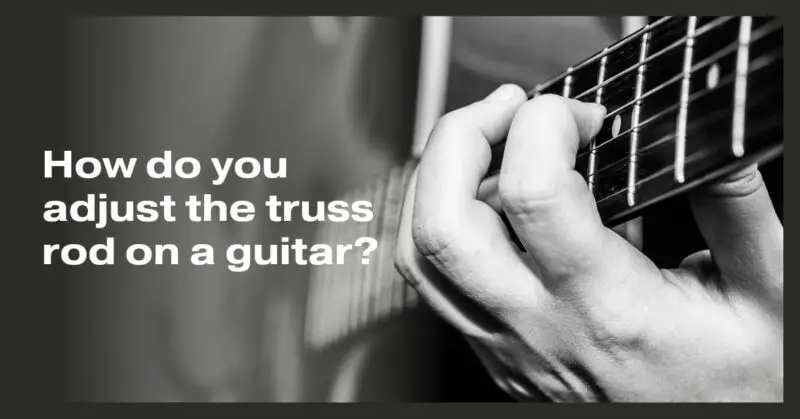The truss rod is a vital component of any guitar’s neck, responsible for maintaining its structural integrity and playability. Knowing how to adjust the truss rod correctly is an essential skill for guitarists, as it allows you to fine-tune the neck’s curvature, ensuring optimal playability and preventing issues like fret buzz and action problems. In this article, we’ll guide you through the process of adjusting the truss rod on your guitar, demystifying this critical maintenance task.
Understanding the Truss Rod
Before we delve into the adjustment process, it’s crucial to understand the truss rod’s function. The truss rod is a metal rod that runs inside the neck of the guitar, typically accessible through the headstock or the soundhole. It counteracts the tension exerted by the strings, helping to keep the neck straight or provide a slight forward bow, depending on the guitar’s design and string tension.
When to Adjust the Truss Rod:
You may need to adjust the truss rod under various circumstances:
- Seasonal Changes: Temperature and humidity fluctuations can cause the neck to shift. Adjusting the truss rod can help maintain proper neck curvature.
- String Gauge Change: Switching to heavier or lighter gauge strings can affect neck tension and may necessitate truss rod adjustment.
- Fret Buzz: If you experience fret buzz (strings buzzing against the frets), it may indicate an improper neck curvature that needs adjustment.
- Action Problems: If the guitar’s action (string height) is too high or too low, the truss rod adjustment can help correct it.
Tools You’ll Need:
Before you start, gather the following tools:
- Truss Rod Wrench: This tool is typically included with your guitar or can be purchased separately. It’s designed to fit the truss rod nut on your specific guitar.
- Capo: A capo is useful for holding down the strings while making adjustments.
- Tuner: A tuner will help you monitor the changes in string tension and pitch as you adjust the truss rod.
Adjusting the Truss Rod: Step-by-Step
Follow these steps to adjust the truss rod on your guitar:
- Prepare Your Guitar: Ensure your guitar is in playing condition, with all strings properly tuned to your desired pitch.
- Capo the First Fret: Place a capo on the first fret of the guitar to minimize the influence of the nut on the neck’s curvature.
- Access the Truss Rod Nut: Depending on your guitar’s design, you’ll access the truss rod nut either through the headstock or the soundhole. Use the appropriate truss rod wrench to engage the nut.
- Determine the Adjustment Direction: Most truss rods work on the principle of righty-tighty, lefty-loosey. In other words, turning the truss rod clockwise (right) will add tension and create a backward bow (upward relief), while turning it counterclockwise (left) will reduce tension and create a forward bow (downward relief).
- Make Small Adjustments: Start by making small quarter-turn adjustments in the appropriate direction. After each adjustment, retune the guitar and wait for a few minutes to allow the neck to settle.
- Monitor the Neck: Check the neck’s curvature by visually inspecting it or using a straight edge along the frets. The goal is to achieve a slight forward bow, which helps prevent fret buzz without causing high action.
- Test Playability: Play the guitar to ensure that it feels comfortable and the action is to your liking. Make additional adjustments if necessary.
- Final Tuning: Once you’re satisfied with the neck curvature and playability, perform a final tuning to ensure your guitar is in proper pitch.
Caution and Considerations:
- Small Adjustments: Always make small, incremental adjustments to avoid over-tightening or loosening the truss rod.
- Patience is Key: Truss rod adjustments take time to settle. Allow several minutes between adjustments to evaluate their impact fully.
- If in Doubt, Seek Professional Help: If you’re unsure about adjusting the truss rod or encounter any difficulties, it’s wise to consult a professional guitar technician to prevent potential damage to your instrument.
Conclusion: Mastering Truss Rod Adjustment
Adjusting the truss rod on your guitar is an essential skill for maintaining optimal playability and preventing common issues like fret buzz. By understanding the function of the truss rod, having the right tools, and following the step-by-step process, you can confidently make adjustments to your guitar’s neck, ensuring it stays in perfect harmony with your playing style and preferences.


